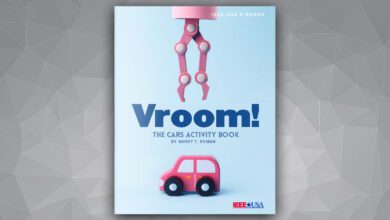
Geographically distributed operations and the rise of remote work have increased reliance on email for business communication, creating challenges for managers and teams striving to meet deadlines and increase productivity.
According to Statista, over 300 billion e-mails are sent and received daily around the world, a number projected to increase to nearly 400 billion daily emails by 2026. Even accounting for filtered spam, that is a lot of email clogging up your email inbox, taking up valuable time to review and making important information easy to miss.
Asynchronous communication often results in team members who are behind the information curve, who can’t find information that has already been shared, or who have not caught up with the email string and ask or reopen questions that have already been resolved.
So start by asking yourself, does an email need to be sent in the first place? Don’t use email to communicate on subjects that are better communicated face to face for reasons of clarity, confidentiality and/or to avoid potential for misinterpretation. Ask yourself if you can accomplish what you need to accomplish better with an instant message, phone call or face-to-face meeting? If the answer is no, then the question is what kind of email will most effectively serve your communication needs.
Here are several techniques to help you use email more effectively both in terms of personal information management and team coordination. Many of them come curtesy of the United States military, which has spent considerable effort on training its leaders to enhance the clarity and focus of email communications throughout the command structure.
Good Email “Netiquette”
The first tip is to maintain good email “netiquette,” which starts with writing with the proper “FOCUS”:
- Focus on only one issue or subject.
- Organize your email to communicate key information first.
- Enhance Clarity through use of active voice and clear language.
- Understand who the target audience is and what their information needs are.
- Use non-essential supporting information S
Short emails are more effective than long ones. Where possible, try to fit all your content into the initial window, so the recipient doesn’t have to scroll down to read your message.
Tone is another important aspect of email “netiquette”:
- Be polite and tactful and use appropriate language.
- Avoid humor, irony, sarcasm or other aspects of speech that can be easily misinterpreted in the context of email communications.
- Remember that ALL CAPS is the email equivalent of shouting.
Part of email “netiquette” is understanding that your reader’s time is valuable and may be limited. Their ability to digest and analyze large volumes of information on the fly should not be assumed. It’s important to be clear and concise about the situation and recommendations requiring the reader’s response or buy-in. Only include what is critical; you won’t score points for extraneous information or by puffing up your own knowledge or expertise. Let the facts speak for themselves.
And a word to the wise. Don’t fire off an email when you’re angry or irritated. Wait until you can address the subject with a calm frame of mind and with all necessary information in hand.
Email Subject Headers
The second tip for more effective email is to make your email subject lines easy to read and easy for the reader to organize with filters. Start your subject line with a keyword that clearly states the purpose of the email and what you want the recipient to do with it.
Over the years, I standardized my own streamlined list of keywords when communicating with my staff or superiors:
- FOR APPROVAL – Used when the recipient’s approval is necessary in order for me to take action. Alternative keywords include “ACTION” or “DECISION”
- MEETING REQUESTED – Used when looking to set a time and place for a meeting, whether face-to-face or by teleconference. Meeting requests can also be managed through a calendaring function that allows you to compare calendars to confirm availability. Another approach, especially when scheduling group meetings, is to include a link to an email polling function with a range of available dates and times. An alternative keyword would be “COORDINATION”
- PROPOSED – Used when I wanted to pitch an idea for consideration, which serves to signal that I am open to replies with questions, critiques or alternative suggestions. An alternative keyword could be “RECOMMENDATION.”
- INFO or FYI – Information shared of potential interest or use. It may prompt a response, but no response is requested.
- WHEREABOUTS – Used to let my team know when I was out of the office and when and how they could reach me.
Another generic set of email subject-line keywords is:
- ACTION – Necessary for the recipient to take some action.
- SIGN – The signature of the recipient is required.
- INFO – For informational purposes only, no response or action is required.
- DECISION – Needs a decision by the recipient.
- REQUEST – Requests permission or approval by the recipient.
- COORD – Coordination by or with the recipient is needed.
Use of keywords lets readers filter incoming email to separate time sensitive requests for action from mail that can be read at leisure and as time permits. By standardizing the use of subject line keywords within your team, you can streamline everyone’s communication and achieve faster resolution of issues.
In addition to the keyword, make sure the subject line identifies the project or issue it is directed toward. If an action is requested, summarize the action (for example. “FOR APPROVAL: Vacation Request”). Where relevant, include dates especially any looming deadlines. But remember to keep the subject line to the point and as short as possible, so that it appears in the reader’s initial view without the need to scroll.
It is possible to use multiple keywords in one subject line, for example a request for approval that is copied to others for information. In that case, be sure to add identify the action keyword with the intended recipient, for example: FOR APPROVAL (Jennifer) and FYI. In most cases, it is simpler to add the FYI recipients as “CCs” to the email instead of putting them in the “TO” line.
Email Organization
A third tip is to think about the organization of your email. There are many ways to organize information and what works best may vary with reader and subject matter. But here are some techniques that may make it easier for readers to read and respond to your email: For team communications, there may also be value in developing a standard organizational template for all team members to use.
Again, the U.S. military trains its officers in several recommended approaches to organizing email content. The most basic approach is BLUF or “Bottom Line Up Front.” This approach emphasizes the use of a short introductory sentence or paragraph that frames the key issue and outlines the recommended action. BLUF communications are tailored more toward rapidly moving issues or situations that require prompt attention. A good “BLUF” introduction immediately answers all the key questions your reader may have: who, what, why, when, where and how.
The BLIND approach also focuses on leading with the bottom line but is geared toward recipients who need more background or contextual information. The BLIND email takes the BLUF approach and organizes supporting information to address impact on the organization, next steps to be taken, and any other relevant details.
The military has also developed a standard format for briefing documents (including emails) known as the Electronic Staff Summary Sheet (or eSSS for short) that organizes its contents under the following series of headings set in bold and all caps: PURPOSE, BACKGROUND; DISCUSSION; VIEWS OF OTHERS and RECOMMENDATION.
Whatever organization you adopt, the key element is to lead with a clear and concise statement of the situation and recommended action. Many time-strapped managers will not read beyond the first paragraph before making a decision, so be sure to make your lead informative and thorough in as few words as possible. It was always my own practice when communicating with superiors to lead with a one sentence summary and recommended action.
Final Review and Quality Control
Before clicking the Send button, it’s important to spend a minute or two reviewing your draft email with a focus on quality control. Some things to check:
- Have you read all the previous emails on this subject or thread and collected all the available information before responding?
- Are all necessary recipients in the TO or CC Address lines, and are the extraneous recipients removed. Try to avoid using “Reply All” and be sure to follow your “chain of command” when distributing emails.
- Does the SUBJECT Line make clear what is expected of the reader?
- Are appropriate salutations and titles used?
- Has the text been spell-checked?
- Are your text fonts readable and have you used emphasis (e.g. Caps, bold, italics, etc.) appropriately.
Is the email’s language clear and neutral in tone? - Is everyone on your proposed distribution authorized to receive the information you are communicating?
- A “thank you” is always a good addition to your closing.
- Have you included an email signature or contact information needed for a response (e.g. your name, position, organization name, phone number(s), email address, etc.)
- Have you attached the correct attachments?
- Are your attachments in commonly used formats and have they been optimized to reduce their size for purposes of reading and printing by the viewer.
- Have you eliminated any unnecessary attachments and irrelevant replies or messages in the email chain you are responding to.
Remember, you never have a second chance to make a first impression, and there is no way to take back an email message once it has been read.
Closing Notes
In our digital world, the ability to manage information and to communicate concisely and effectively by email is one of the many things that demonstrate leadership potential.
Implementing these techniques will improve how you access and organize information received by email. Less time spent searching your overflowing inbox and trying to extract necessary information from an overlong, multi-subject email will mean less rework and more time available for productive problem-solving.
Proper “netiquette” and solid communications will build and reinforce good working relationships and strengthen team collaboration.
Done properly, email becomes a tool that empowers instead of aggravates.






